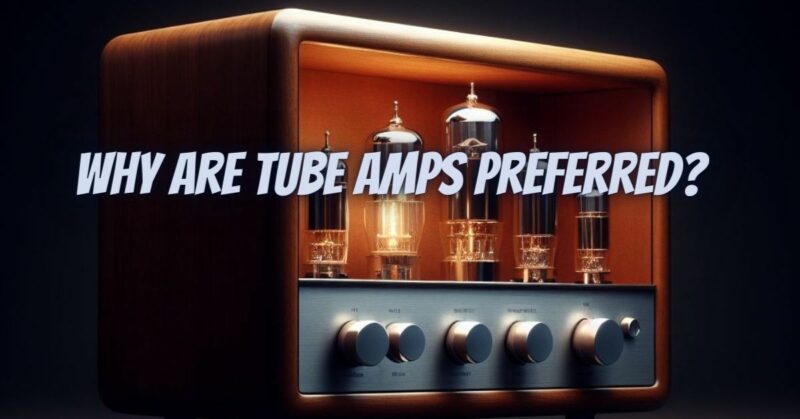In a world dominated by digital technology and solid-state amplification, the enduring appeal of tube amplifiers, often referred to as valve amps, is nothing short of remarkable. Musicians, audiophiles, and enthusiasts alike continue to prefer tube amplifiers for their unique characteristics and captivating sound. In this article, we will delve into the reasons why tube amps are preferred by many and why they maintain a special place in the hearts of audio connoisseurs.
- Sonic Warmth and Richness
The foremost reason for the preference of tube amplifiers is their exceptional sound quality. Tube amps are celebrated for their warm and harmonically rich sound, characterized by lush, full-bodied tones. This richness is a result of the way vacuum tubes amplify audio signals, introducing subtle distortions and harmonics that are often described as “musical” by enthusiasts. This unique sonic signature makes tube amps particularly well-suited for genres like jazz, blues, and rock, where a touch of vintage warmth can elevate the listening experience.
- Natural Compression and Dynamics
Tube amplifiers possess a remarkable ability to deliver natural compression and dynamic response. As the input signal approaches the amplifier’s maximum output, the tubes gradually saturate, creating a pleasing compression effect. This compression not only adds depth and character to the music but also enhances the emotional impact of the sound. Musicians, especially guitarists, appreciate this expressive dynamic response, which allows for a wide range of tonal nuances and articulations.
- Timeless Aesthetics
Beyond their sonic prowess, tube amplifiers hold a timeless and nostalgic aesthetic appeal. The warm glow of the tubes, the vintage-inspired design, and the tactile controls all contribute to an aesthetic that resonates with those who value the visual aspect of their audio equipment. Tube amplifiers are often seen as pieces of art that can add a touch of elegance and nostalgia to any audio setup, whether it’s a home listening room or a professional recording studio.
- Musicality and Expressiveness
Musicians, in particular, are drawn to tube amplifiers for their musicality and expressiveness. Unlike some solid-state counterparts, tube amps respond dynamically to a player’s touch and playing style. This responsiveness allows for a more intimate connection between the musician and their instrument, enabling them to shape and articulate their sound with precision. The ability to coax different tones and textures from a tube amp based on playing dynamics is a hallmark of their appeal.
- Vintage Tone Reproduction
Tube amplifiers are often praised for their ability to faithfully reproduce the vintage tones of classic recordings. Musicians who seek to emulate the iconic sounds of bygone eras often turn to tube amplifiers as a vital component of their tone arsenal. Whether it’s the sparkling clean tones of a vintage Fender amplifier or the overdriven crunch of a classic Marshall stack, tube amps are prized for their ability to capture the essence of these vintage sounds.
The enduring preference for tube amplifiers in a world filled with advanced technology and solid-state alternatives is a testament to their unique qualities. The allure of tube amps lies in their ability to produce a warm and harmonically rich sound, provide natural compression and dynamics, offer timeless aesthetics, and inspire musicality and expressiveness.
While tube amplifiers do have their drawbacks, including maintenance requirements and limited versatility compared to some modern options, these factors have not diminished their appeal. Tube amplifiers continue to captivate the hearts and ears of those who appreciate the beauty of analog warmth and the subtleties of sound that only tubes can deliver. In a world where technology constantly evolves, tube amplifiers remind us that sometimes the classics endure for a reason, and the pursuit of sonic perfection is a journey that transcends time and trends.


